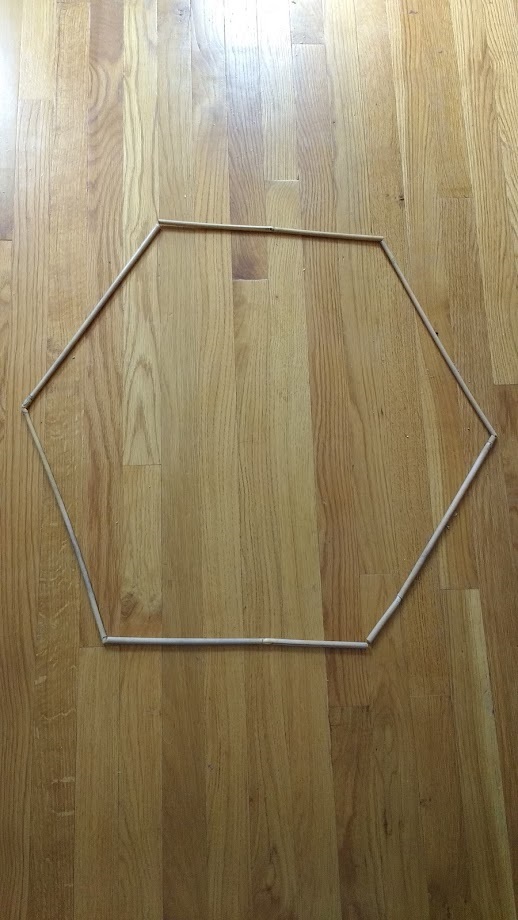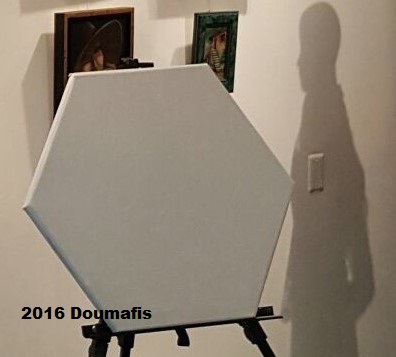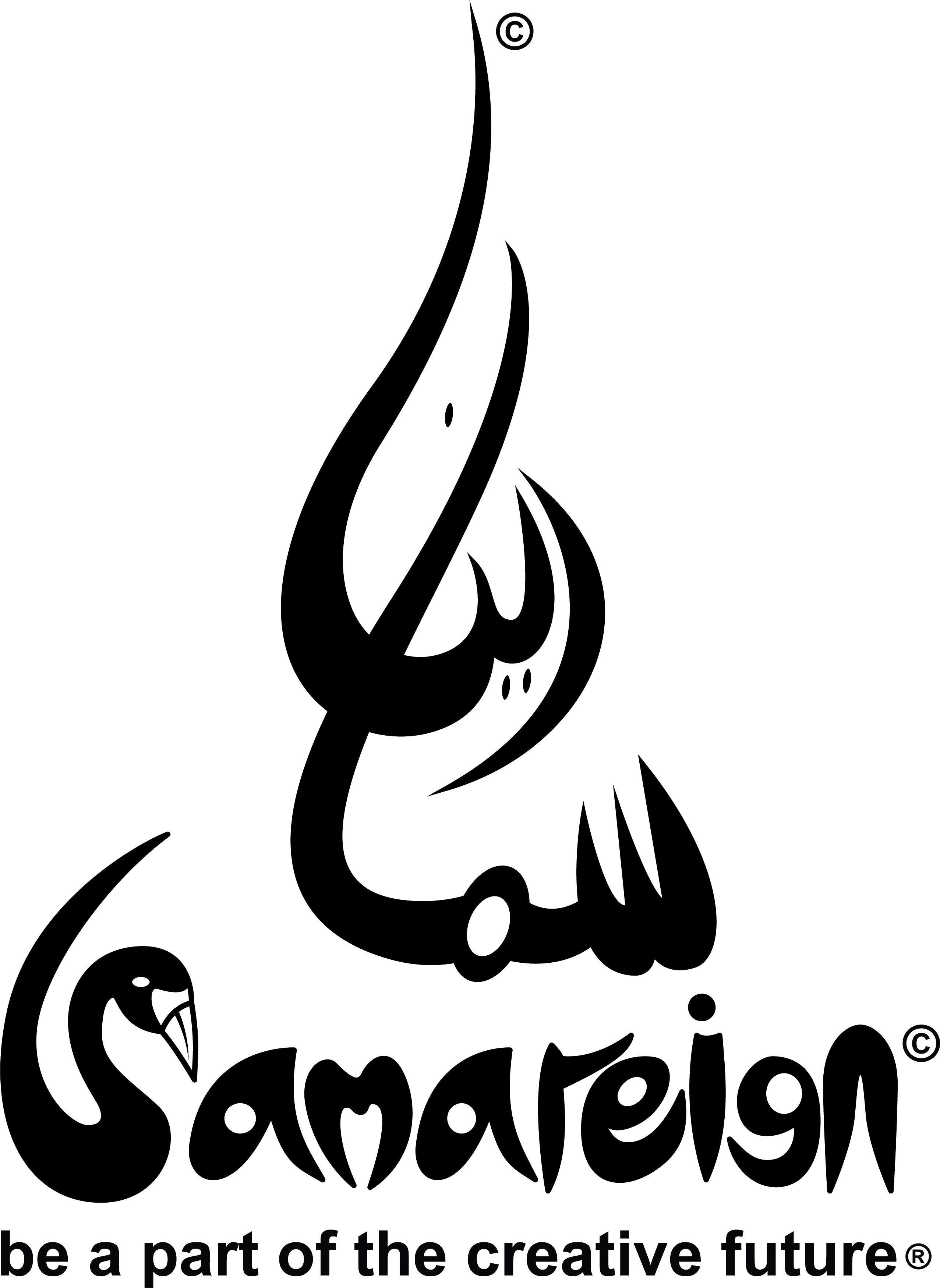For thousands of years, the artists only had the options of painting on rectangular and square art canvases. At a certain contemporary date, a circular shape canvas was added to the supply chain. It follows that the fine arts industry is similar to an automobile assembly line. Art enthusiasts are only able to look at paintings along a linear point of view. My observation of this current frame of reference led me to conclude it is extremely mechanical. This critical observation made me think about reframing the art, from classical framework, using my LIFE model as the foundation, to reinforcing the dynamic of collaboration which is rooted in my life’s work.
LEADING WITH ART
In January 2016, my sister, a member of the Artistes Reminiscences (Photo 1) organized a trip and invited me. I graciously accepted the offer to join these illustrious fellow artists, on their journey to one of the most historic countries in the Americas. I traveled to the Caribbean with a delegation of visual artists from Montreal, Province of Quebec, Canada. Interestingly, a voyage that was expected to be sunny turned to a sojourn filled with rainy days. In a way, this was a blessing in disguise because we did not go out when it rained. On those days, I spent considerable time listening and talking with them. It opened an opportunity for dialogue to engage in serious conversations. So, I listened to their anecdotes, dreams, and aspirations. I heard, in their collective voice, the obstacles and the limit they face as artists. The ambiance was warm, engaging, and cordial. We all shared three delicious meals per day, to further the bond. One day, as we were walking along the shore of las casas, it became obvious to me that the art, specially fine arts, was constrained in a millennial old frame. I asked myself, what can you do to change it?
Photo 1. Members of Artistes Reminiscences
This inspiring trip was short-lived, and I returned home with this puzzle still lingering in my thoughts, accompanied by photos that captured the camaraderie between the artists and local people during tours in the city, dinner at their homes, and exhibits at art galleries. I was

determined to find the collaborative breakthrough to show Innovation Through the Art (ITA). In general, Innovation is mostly associated with Technology. Hence, I was on the road traveled the least by risk adverse people. I spent days thinking about what to do. I kept my focus on two prospects. I narrowed my field of action strictly to the form and content of visual arts. I did not think it was proper to intervene on the content side. The artists might interpret it as meddling in their affairs. By this process of elimination, I concentrated my effort on the form. I would rather say, Re-framing the Arts. Clearly, I was able to glance at the future. I suddenly opened a window of opportunity, which illuminated from within. I was experiencing a Redefining moment. I, therefore, came up with the idea to create an innovative art canvas composed of six sides for artists to paint.
MY THEORY OF CHANGE
I once heard Samareign©, Owner of 33Fusion, LLC, say, an idea is an idea until you manifest it to reality. Indeed, I had a vivid image of this product in my head. I felt the urgency to figure out how to make it concrete. I spoke to loved ones, friends, and colleagues about it. But I did not have a model that I could show them. As a child, I learned the significance of Modeling, by watching my mother make clothes. Before cutting the fabric to sew a dress, she created a pattern. I must also mention that her method involved an initial conversation about the type of dress, measurement of the person, and retainer fee. Recalling her approach, I decided to design a prototype.
BRINGING A CAPITAL GOOD TO THE ART MARKET
On the floor, in one of the rooms of my house, I sat down, thinking, and rethinking every step to creating a new art canvas (Photo 2). In all honesty the first step was easy as existence 2.0. I simply took six pieces of bamboo shoots. I cut each bamboo sprig 14" inches long. I double checked my measurements to make sure my new bamboo stretcher bars fit perfectly.

Photo 2. Concept of hexagonal canvas
Let me rename this step one Ideation. Hence, I must point out to my readers that I did not yet have a Minimum Viable Product (MVP). Toward this end, I showed the rendering of my hexagonal canvas to a cadre of artists, approximately one hundred, who either resided in the Americas, or abroad. I wanted to get their feedback. I asked a simple question. If I developed a hexagonal canvas would you paint on it?
Satisfied with the information that I collected, I set out to put together a production team. I must emphasize this factor, getting the right people is the key to having trust in the process. I also want to make it clear that the final outcome is the result of process. It means, I do not encourage "do it yourself” (DIY). At this phase, I had to decide where to build the hexagonal art canvas. I reached out to the late Mel King, Civil Right Leader, Professor at the Massachusetts Institute of Technology, and Founder of the South End Technology Center (SETC) in the South End, a neighborhood of Boston, MA. I asked him if I could use the SETC to make a capital good. He said yes. A team of three persons1, over the course of one day, cut a total of 150 stretcher bars, and assembled them as frames. Subsequently, I stretched these frames to create 25 hexagonal art canvases (Photo 3).
1Dumas Lafontant, ML, Vandenburg K. Millien, and Brad Pressler
RE-FRAMING THE ART
As a creative I find it extremely important to think about invention to show innovation in the art world. The traditional four-sided canvas has been a part of a long and rich art history, but we do not have to be stuck in it for eternity. Perhaps it’s time for the hexagonal canvas to take the forefront as the new frame of the twenty first century. When I initially developed it I thought of the many ways that artists can interact with it, including collective painting, since the structure resembles a honey comb, one of the building blocks of life. The artists and curators are in effect bees at art gallery and museum working collectively.

Photo 3. Minimum Viable Product
It follows that I must continue my work to show innovation, combining art and technology. This ongoing effort to succeed needs increasing viewer engagement, and financial support. As Samareign© says, this is an opportunity for fans of the art to, "be a part of the creative future”.
© 2025 Copyright. All Rights Reserved. Doumafis, Writer, and Samareign©, Contributing Writer
